Over the summer we discovered that we had unexpected residents in our second owl box, the one occasionally used by owls but more often by squirrels and then suddenly by honeybees. 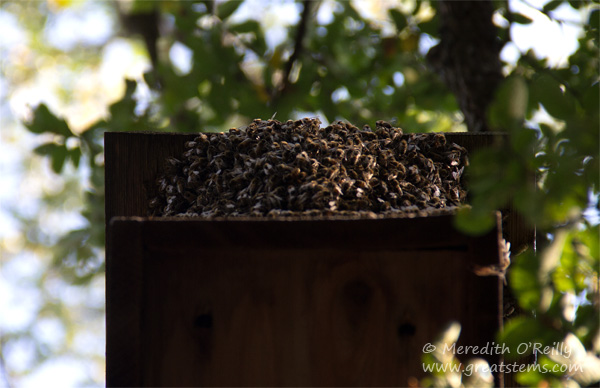 While I prefer the bees to the squirrels, we knew it was best to rescue them. For one, it was supposed to be an owl box, even if it was the “extra” one the owls didn’t typically choose. Two, the chances of the bee colony making it through the winter in that box were slim. Three, my husband is allergic to bees and worried that he’d be at risk anytime he worked in the vicinity of the hive.
While I prefer the bees to the squirrels, we knew it was best to rescue them. For one, it was supposed to be an owl box, even if it was the “extra” one the owls didn’t typically choose. Two, the chances of the bee colony making it through the winter in that box were slim. Three, my husband is allergic to bees and worried that he’d be at risk anytime he worked in the vicinity of the hive.
Here you can see the bees are staying cool by collecting on the
outside of the box. This effect is called “bearding.”
It’s important to do everything you can to protect pollinators, whose decline is becoming more critical every day. We do our part by keeping an organic wildlife garden that has a diversity of colorful native flowers of all shapes and sizes, as well as water sources that allow insects to safely drink. We also have several bee boxes and even an insect hotel that welcomes nesting native bees. So while we knew we needed to let these precious pollinators go, we wanted to do so in a way that would protect the queen and colony. Time to bring in a bee rescue team!
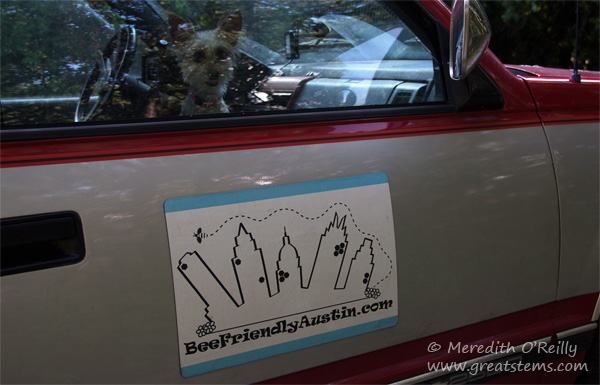
We decided to call Bee Friendly Austin. Tanya and Chuck rescue bees, and they also have a working apiary and teach beekeeping classes. They arranged to arrive just before dusk, when the majority of bees would be back at the hive (and hopefully sleepy).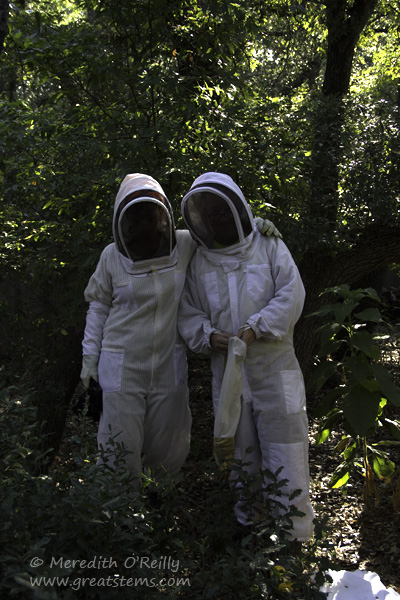
Chuck and Tanya donned their bee gear and planned to use only a drill to unscrew the owl box from the tree and a sheet to cover the bees. Chuck did not smoke the bees first, as some might expect. He prefers to avoid that method.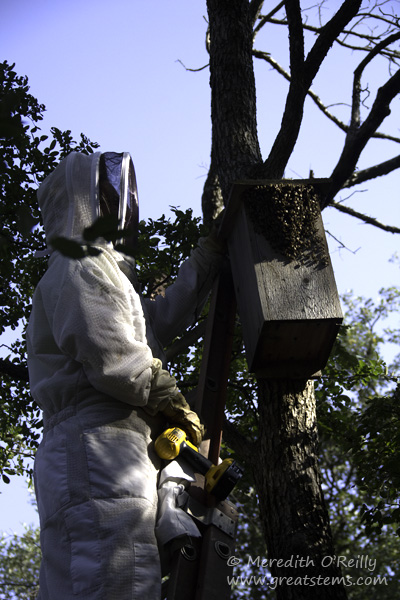
The act of removing the first screw with the drill was enough to disturb a handful of bees. Better to be safe than sorry — Chuck opted to get the sheet to cover the hive.
Definitely the way to go.
Three screws undone, and the hive was ready to come down. Chuck made it look so easy.
Meanwhile, our neighbors Jan and Gerry had their own bee colony in one of their owl boxes. How convenient for Chuck and Tanya to pick up two colonies during the same trip. And so they did.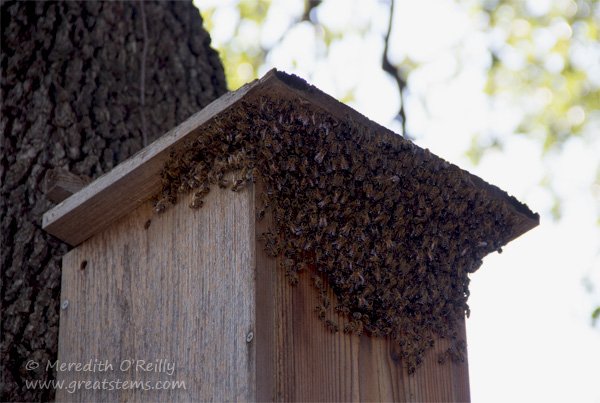
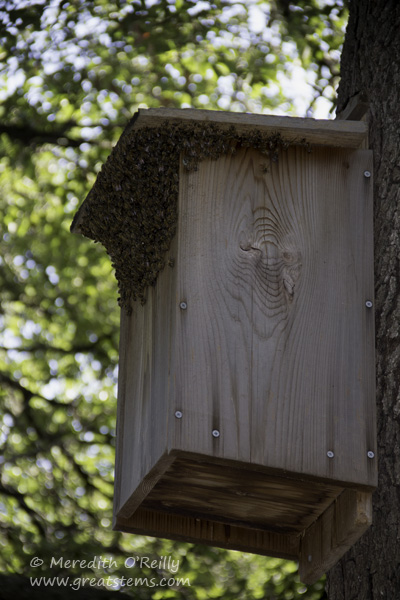
It must get fairly warm inside those boxes, even in the shade. Here the bees are bearding again.
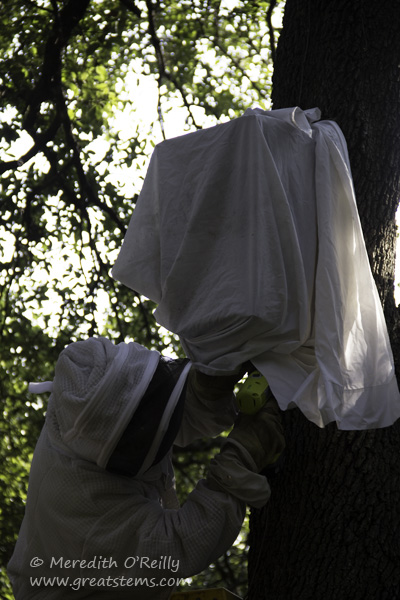 Chuck used the same technique with the sheet, as it had worked so smoothly at our house. It worked just as smoothly the second time.
Chuck used the same technique with the sheet, as it had worked so smoothly at our house. It worked just as smoothly the second time.
You can see that a few bees were agitated by the process, but only a few. The sheet did a great job keeping the majority of the hive calm and together.
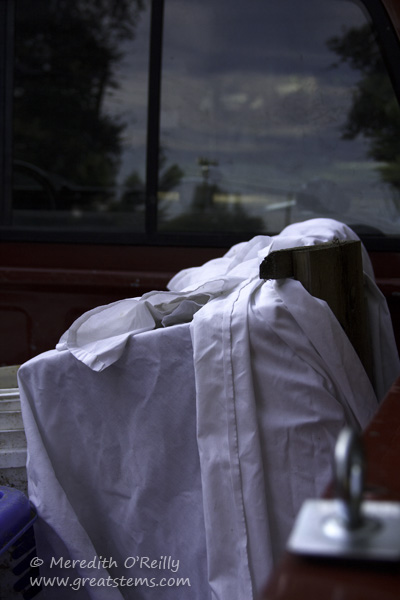
There they go, off to their new location. Tanya and Chuck will transfer them to new hives, taking care to locate and protect the queens.
FYI, Bee Friendly Austin coordinates Austin’s annual Tour De Hives. This year’s tour is coming up soon — September 20, 2014. If you are interested in beekeeping, or if you just enjoy seeing one of the events that make Austin special, check it out!
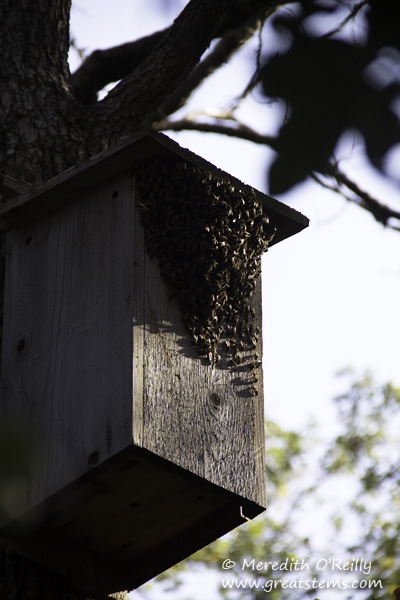
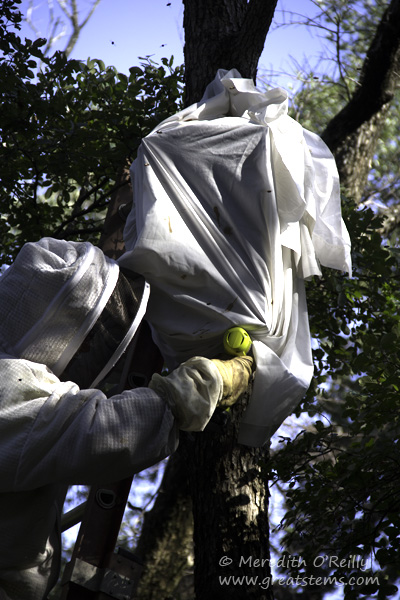
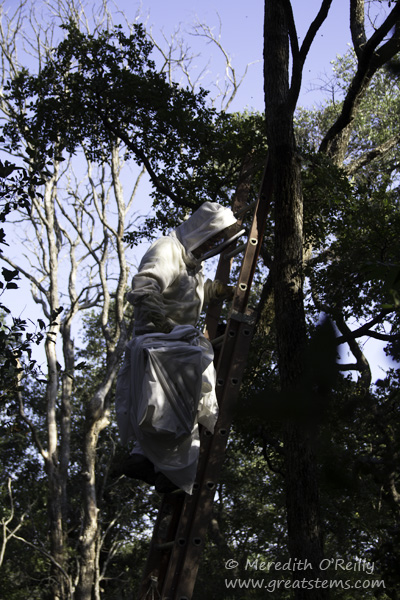
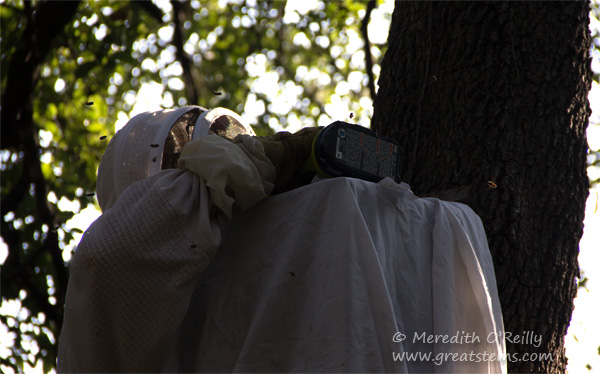
I so wish I could have a bee hive – but alas and alack, it’s against the HOA rules (because they must be 50′ from fences AND buildings). Instead I’ll just have to make due with trying to keep blooming plants alive. I may just have to make a few insect hotels, though. OH! I never ended up posting it because I’m being supremely lazy in my blogging, but when we were in Paris, I noticed an insect hotel at Notre Dame! I was very excited. I think my husband thought I was crazy.
Lovely story of the bee rescue! I’m glad everything went smoothly. I often think how difficult it would be to be allergic to bees. I enjoy being around them so much, and can’t imagine having to stay away. Great post!
That was fascinating! Neighbors were just talking about pruning a tree with bees in it, and I was so worried they’d kill them. But I was glad I had a chance to tell them to please, please, please call a bee keeper first!
I am glad, too, Robin. Save the bees and save the trees!